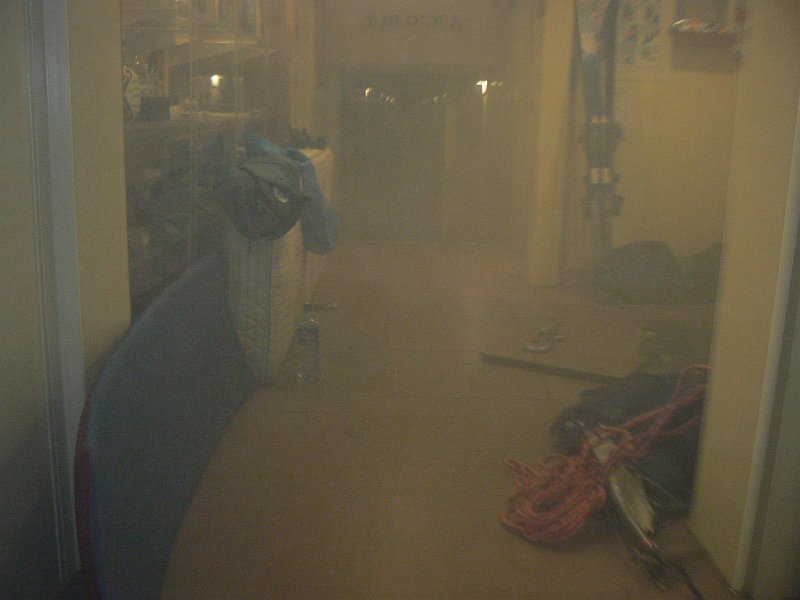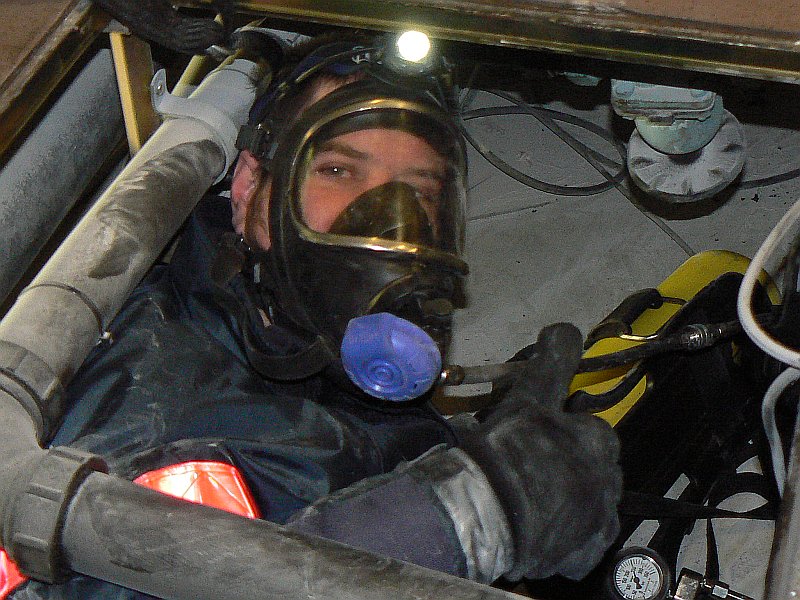Fire in the Hole!
The recent storm and near-destruction of my tent brings to the fore an unalterable fact – Antarctica is an environment at the very margin of man’s ability to survive, and in winter, that margin becomes a knife-edge. Unaided and without shelter we would not last more than a few hours in a winter storm; indeed, to survive any length of time on this continent requires hard work, good equipment and plentiful supplies. I remain in awe of the early explorers who survived in near-subsistence on the coast by hunting seals and sea-birds; in the interior of the continent there is no possibility whatsoever. The parallel between Antarctic and space exploration is often made, but no less valid for its repetition. Other than air and water, we must bring each item necessary for survival with us, and live (for the most part) isolated from the environment in which we are immersed. In the darkness of a winter storm the comparison is even more astute; we can venture briefly outside but must be completely isolated from the ambient conditions in multiple protective layers. Gloved and goggled we breath through face-masks that rapidly become crusted with ice; we must light our path with headlamps; the ice and snow make weird sounds as we walk with massive insulated boots; the most basic tasks become a challenge with thick mittens. Trapped in my own tiny world by the clothes, goggles, wind noise and decreased visibility it is an odd isolation that immediately leads me to imagine I am walking on the surface of a harsh distant planet – the only other times I’ve experienced this other-worldly sensation were when undertaking deep scuba-dives at night.
Our base certainly holds up to comparison with a space-craft as it stands on its stilts on the frozen rock. A half-metre thick insulating shell with small triple-layered windows (featuring an insulating xenon-filled space) is breached only by a few portals, with each entrance having inner and outer doors with an ‘airlock’ inbetween. Summer visitors might see the base as a comfortable home, but after experiencing winter here it a subtle mental shift occurs, and one realises that we are desperately and nearly completely dependant thereupon for safety. We have backup plans – the cabooses, the small radar hut, and two underground freezers that can be used as shelter in an emergency, but non of these options would be any fun at all, euphemistically speaking.
With the base’s integrity so vital to our survival, it is obvious that we take every precaution to protect it. Like a ship at sea or in space, the most terrifying emergency is a fire. At SANAE, we have a very sophisticated fire-alarm system which includes an inert-gas system to flood the generator-room and associated areas, and all manner of heat, flame and smoke detectors in every ares. The team also undergoes intense fire-fighting training before the expedition, which includes the use of breathing apparatus and all nature for extinguishers.
Unfortunately, like any other complicated system, the fire alarm is prone to occasional malfunction. We have become used to intermittent false alarms (usually early in the morning, obviously due to the system’s cruel sense of humour) and ‘true-negative’ alarms due to team-members forgetting to turn on the kitchen extractor fans or leaving toast in the toaster too long. When the alarm went off on Sunday, I grudgingly got out of bed to do the requisite check and switch it off. By the time I reached the lower hallway, however, my pace accelerated from brisk walk to run: the passage was smoke-filled and I could hear Saz yelling ‘FIRE!’
A small electrical fire had broken out in the crawlspace under the link between A and B-blocks. All of our power and communications cables run through these spaces, as well as water and sewerage pipes; this protects them from the elements and allows access even in very foul weather. Unfortnately, these spaces are not ideal for fire-fighting! Luckily, we had been into this particular area to work on a water pipe about 10 days prior to the fire, and one wall panel was still loose to allow inspection. The team’s training and drills kicked in impressively and the fire was quickly under control. I slithered in with a BA to make certain it was thoroughly extinguished and remove the burnt insulation. Fortunately, there was no significant damage to the base, but from the jokes and nervous laughter that followed it was obvious that the team had felt the threat. Houston, we had a problem…

